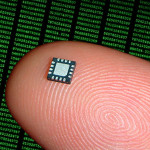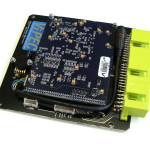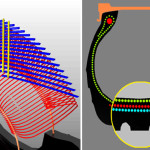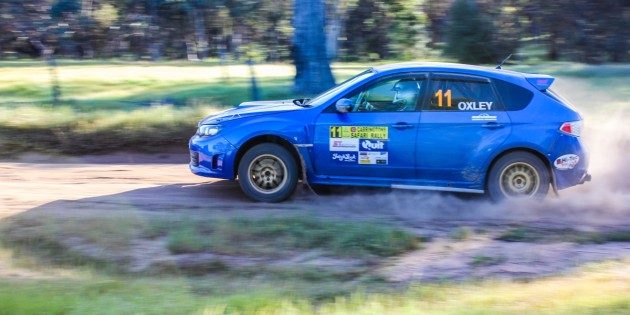If you’re thinking Turbos and all wheel drive, you’d be partially correct.
For more than 30 years, 4 wheel drive and turbo charging have been standard equipment in rally cars. It was way back in 1981 that Audi brought the concept to the WRC and the game changed completely.
Having said that, modern rally cars are not just fast due to how many wheels they are turning or the size of the hair dryer bolted to the engine.
The simple answer is technology and at an even more basic level, computers.
Yes the humble microchip has caused an evolution that has meant cars in general have improved more in the last 30 years than they had done in the entire rest of their history.
For many of us it’s hard to imagine that the smart phone in our pocket has more power than early day computers or even a laptop of 10 years ago, however that same advancement has also helped Motorsport.
For manufacturers, every part of a car is designed in a computer, modelled and tested, long before it is put into production. In terms of rally cars, everything from roll cage design to tyres and brakes are developed in a computer.
The car’s “brain” or engine management unit is one area that has had a significant impact on the speed of rally cars. Electronic fuel injection and ignition control help to gain more power from every drop of fuel. Another area that has benefitted is transmission design. Sure, having all four wheels driven is better than just two, however the quicker you can change gears and the more accurately you can control drive to those wheels, the more of the engine’s power you can put to the road. A computer controlling all or part of the drive system can send power to where it is needed most and change gears in a split second.
If you design; transmission, suspension and tyres as an overall package, the most gains are made. World rally cars are designed by manufacturers using this approach.
For us without the resources of a manufacturer or a lab full of engineers, modern individual components still bring more speed.
Using the latest ECU, gravel suspension and transmission will undeniably improve the speed of an older rally car. Don’t think so? There’s some Audi Quattros out there with the latest motorsport developments on board powered by their original engines and the cars go much quicker now in private hands then they ever did when run by full factory teams in the 80’s.
Even with older two wheel drive cars, technology has increased speed. Take a rear wheel drive Datsun or Escort. Use the original engine, fit it with fuel injection, electronic ignition and programmable engine management and the cars make a quantum leap forward in comparison to their points based ignitions and carburettors of the 70’s. This we know for fact. The s ame is true for handling. Fitting of modern suspension units over those that were considered cutting edge in their day vastly improves road holding and shows with faster stage times.
ame is true for handling. Fitting of modern suspension units over those that were considered cutting edge in their day vastly improves road holding and shows with faster stage times.
Technology has changed so much that World Rally Cars, once based on a 2 litre engine capacity have now been reduced to 1.6 litre and yet they are as fast if not faster than their larger capacity cousins.
Similarly within Australian rally rules, using regular pump fuel such as 98 octane, 350+hp can be reliably extracted from a 2L turbo engine with good programmable engine management and a skilful tuner.
Advancing electronics hasn’t just aided in speed, handling and traction. Reliability of mechanical components has improved too. Using a variety of sensors, computers can protect valuable engines, retarding performance or shutting down an engine before the driver is aware there is a (potentially very expensive) problem.
Brakes too have advanced a great deal and not just on the hardware side. Take the linings for example. Whilst the best idea is to fit the biggest brakes you can, the development of improved lining materials has changed braking forever. In many cases, standard older brake setups perform much better with new compound brake pads that have been developed for race and rally. We’ve seen many cases where simply changing to a new type of brake pad has meant a driver could easily brake 50 metres later approaching a corner.
The last link in the chain is tyres. Continual development and improvement by all the major manufacturers has resulted in better tyres. The tread pattern, compound (how hard or soft the rubber is) and casing design are now advanced at a molecular level. All of the work results in tyres providing more grip and turn in than ever before.
When the silicon chip was invented about 60 years ago, no one ever thought it would prove so valuable to motorsport. Imagine where technology will take us in another 50 years.

Leave A Response